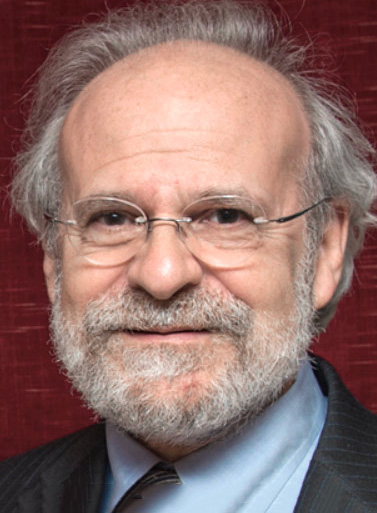

 Ukraine's representative to ICANN's Governmental Advisory Committee (GAC) has sent a letter to the Internet Corporation for Assigned Names and Numbers (ICANN) to remove Russian-administered top level domains (.RU, .SU and .рф) from the DNS root zone. In a separate letter, Ukraine's representative also asked RIPE NCC to withdraw the right to use all IPv4 and IPv6 addresses by all Russian members of the regional IP registry for the European region. more
Ukraine's representative to ICANN's Governmental Advisory Committee (GAC) has sent a letter to the Internet Corporation for Assigned Names and Numbers (ICANN) to remove Russian-administered top level domains (.RU, .SU and .рф) from the DNS root zone. In a separate letter, Ukraine's representative also asked RIPE NCC to withdraw the right to use all IPv4 and IPv6 addresses by all Russian members of the regional IP registry for the European region. more
 At 4:04 AM on February 26 Mykhailo Fedorov, Vice Prime Minister and Minister of Digital Transformation of Ukraine requested Starlink service from Elon Musk and at 2:45 PM on the 26th, Elon Musk tweeted "Starlink service is now active in Ukraine. More terminals en route." On February 28 at 12:29 PM Fedorov posted a photo of a truck load of terminals. (Kyiv is 10 hours ahead of California). more
At 4:04 AM on February 26 Mykhailo Fedorov, Vice Prime Minister and Minister of Digital Transformation of Ukraine requested Starlink service from Elon Musk and at 2:45 PM on the 26th, Elon Musk tweeted "Starlink service is now active in Ukraine. More terminals en route." On February 28 at 12:29 PM Fedorov posted a photo of a truck load of terminals. (Kyiv is 10 hours ahead of California). more
 After years of work on a proposed standardized system of WHOIS data disclosures (referred to as SSAD), and over a year of operational assessment of the proposal by ICANN itself, the ICANN Board seems poised to reject the proposal. And rightly so. The proposed SSAD is entirely watered down, fractured, and affords no oversight powers to ICANN regarding disclosure decisions that would continue to be left to the complete discretion of individual registrars (the very parties ICANN oversees). more
After years of work on a proposed standardized system of WHOIS data disclosures (referred to as SSAD), and over a year of operational assessment of the proposal by ICANN itself, the ICANN Board seems poised to reject the proposal. And rightly so. The proposed SSAD is entirely watered down, fractured, and affords no oversight powers to ICANN regarding disclosure decisions that would continue to be left to the complete discretion of individual registrars (the very parties ICANN oversees). more
 Marketers far and wide have piled onto the non-fungible token (NFT) craze. To some great success and fanfare, NFTs are being used to promote and monetize media, goods, and services in almost every segment. Media, Fashion, Entertainment, Sports, Gaming, Art, Beverage, Consumer Goods, Financial, and even Enterprise Software companies are getting into the mix. This brief review examines why, how, and where marketers are using NFTs, how NFTs are being abused and gives high-level advice to marketers and brand protection professionals. more
Marketers far and wide have piled onto the non-fungible token (NFT) craze. To some great success and fanfare, NFTs are being used to promote and monetize media, goods, and services in almost every segment. Media, Fashion, Entertainment, Sports, Gaming, Art, Beverage, Consumer Goods, Financial, and even Enterprise Software companies are getting into the mix. This brief review examines why, how, and where marketers are using NFTs, how NFTs are being abused and gives high-level advice to marketers and brand protection professionals. more
 Last April, Elon Musk tweeted that Starlink "should be fully mobile later this year, so you can move it anywhere or use it on an RV or truck in motion." It is good to know that mobility with a standard dish is in the works, but it's not yet available. David Lang had been able to connect his Starlink terminal about fifteen miles from his home in Simi Valley, California, but when he brought it to my place in Carpinteria, California, about forty-three miles away and in a different coverage cell, it failed to connect. more
Last April, Elon Musk tweeted that Starlink "should be fully mobile later this year, so you can move it anywhere or use it on an RV or truck in motion." It is good to know that mobility with a standard dish is in the works, but it's not yet available. David Lang had been able to connect his Starlink terminal about fifteen miles from his home in Simi Valley, California, but when he brought it to my place in Carpinteria, California, about forty-three miles away and in a different coverage cell, it failed to connect. more
 zoomready is open-source shareware I wrote to measure the suitability of an internet connection for teleconferencing. As you can see above, Starlink had an average zoomready rating of 2.66 out of a possible 3.0 over the four measured days. The problem is NOT bandwidth, which has fluctuated but stayed above the minimums needed for good teleconferencing. The problems are failures (most of them short), latency, and jitter. more
zoomready is open-source shareware I wrote to measure the suitability of an internet connection for teleconferencing. As you can see above, Starlink had an average zoomready rating of 2.66 out of a possible 3.0 over the four measured days. The problem is NOT bandwidth, which has fluctuated but stayed above the minimums needed for good teleconferencing. The problems are failures (most of them short), latency, and jitter. more
 Sandvine gathers data from the 160 largest fixed and wireless ISPs on the planet to understand Internet usage trends. The statistics discussed below come from the Sandvine January 2022 Global Internet Phenomena Report. Sandvine identifies several current industry trends... more
Sandvine gathers data from the 160 largest fixed and wireless ISPs on the planet to understand Internet usage trends. The statistics discussed below come from the Sandvine January 2022 Global Internet Phenomena Report. Sandvine identifies several current industry trends... more
 I bet that nobody believed in 1992 that thirty years later, we'd still be discussing the state of the transition to IPv6! In 1992 we were discussing what to do about the forthcoming address crunch in IPv4, and having come to terms with the inevitable prospect that the silicon industry was going to outpace the capacity of the IPv4 address pool in a couple of years, we needed to do something quickly more
I bet that nobody believed in 1992 that thirty years later, we'd still be discussing the state of the transition to IPv6! In 1992 we were discussing what to do about the forthcoming address crunch in IPv4, and having come to terms with the inevitable prospect that the silicon industry was going to outpace the capacity of the IPv4 address pool in a couple of years, we needed to do something quickly more
 One of the central goals of a brand protection program is detecting infringing third-party activity that falls outside the firewall - that is, external to a brand owner's portfolio of official core and tactical domains. Brand threats occur across a range of internet channels, but domain name abuse is one of the most significant areas for concern, both in terms of the visibility and potential for confusion of branded domain names by potential customers, and the enforcement options available. For this reason, domain monitoring is considered a core component of a brand protection service. more
One of the central goals of a brand protection program is detecting infringing third-party activity that falls outside the firewall - that is, external to a brand owner's portfolio of official core and tactical domains. Brand threats occur across a range of internet channels, but domain name abuse is one of the most significant areas for concern, both in terms of the visibility and potential for confusion of branded domain names by potential customers, and the enforcement options available. For this reason, domain monitoring is considered a core component of a brand protection service. more
 The Internet Corporation for Assigned Names and Numbers (ICANN) is a not-for-profit corporation, which essentially functions as a governing body for the Internet and brings together representatives from government, civil society, academia, the private sector, and the technical community. Despite its importance in crafting policies related to world wide web development, a significant portion of digital rights lawyers underestimates ICANN’s regulatory role in contrast to one of the national governments. more
The Internet Corporation for Assigned Names and Numbers (ICANN) is a not-for-profit corporation, which essentially functions as a governing body for the Internet and brings together representatives from government, civil society, academia, the private sector, and the technical community. Despite its importance in crafting policies related to world wide web development, a significant portion of digital rights lawyers underestimates ICANN’s regulatory role in contrast to one of the national governments. more
 Imagine that you run an organization out of a building. Imagine that the landlord comes one day and says, "Oh I didn't know you are a resident of country X or dealing with anybody from country X. I have to close this place down right now." And then you are done. You don't have an organization anymore. This very scenario happens on the Internet. more
Imagine that you run an organization out of a building. Imagine that the landlord comes one day and says, "Oh I didn't know you are a resident of country X or dealing with anybody from country X. I have to close this place down right now." And then you are done. You don't have an organization anymore. This very scenario happens on the Internet. more
 When we first heard of the possibility of broadband from low-orbit satellites, there was a lot of speculation that the technology could bring affordable broadband to the masses around the globe. The latest announcement from Starlink shows that affordable broadband is probably not coming in the immediate future. Starlink announced a premium tier of service with a $500 monthly fee for 150-500 Mbps. more
When we first heard of the possibility of broadband from low-orbit satellites, there was a lot of speculation that the technology could bring affordable broadband to the masses around the globe. The latest announcement from Starlink shows that affordable broadband is probably not coming in the immediate future. Starlink announced a premium tier of service with a $500 monthly fee for 150-500 Mbps. more
 The last few decades have not been a story of unqualified success for European technology enterprises. The European industrial giants of the old telephone world, such as the former stalwarts Alcatel, Siemens, Philips, Ericsson and Nokia, have found it extraordinarily difficult to translate their former dominant positions in the telco world into the Internet world. To be brutally frank, none of the current generations of major players in the digital environment are European. more
The last few decades have not been a story of unqualified success for European technology enterprises. The European industrial giants of the old telephone world, such as the former stalwarts Alcatel, Siemens, Philips, Ericsson and Nokia, have found it extraordinarily difficult to translate their former dominant positions in the telco world into the Internet world. To be brutally frank, none of the current generations of major players in the digital environment are European. more
 Voice over IP (VoIP) represents a sharp break from the traditional telephony. The story of VoIP is important in helping us think beyond the simplistic framing of a "digital transition". The first stage of any technology is emulating the old. Indeed, digital telephony was just like traditional analog telephony -- just FBC (Faster, Better Cheaper) but not fundamentally different. Merely changing from analog to digital isn't transformational in itself. But it creates the opportunity for transformation. more
Voice over IP (VoIP) represents a sharp break from the traditional telephony. The story of VoIP is important in helping us think beyond the simplistic framing of a "digital transition". The first stage of any technology is emulating the old. Indeed, digital telephony was just like traditional analog telephony -- just FBC (Faster, Better Cheaper) but not fundamentally different. Merely changing from analog to digital isn't transformational in itself. But it creates the opportunity for transformation. more
 Nielsen recently published some statistics about how we watch videos that show a continuing trend of migration from traditional video to watching video online. One of the most striking statistics is the total volume of online videos. December 2021 saw an aggregate of 183 billion minutes of online video viewing. And even that, the number is likely small since there are many uses of video on the web that are not likely counted in the total. more
Nielsen recently published some statistics about how we watch videos that show a continuing trend of migration from traditional video to watching video online. One of the most striking statistics is the total volume of online videos. December 2021 saw an aggregate of 183 billion minutes of online video viewing. And even that, the number is likely small since there are many uses of video on the web that are not likely counted in the total. more
Sponsored byWhoisXML API

Sponsored byVerisign

Sponsored byDNIB.com

Sponsored byCSC

Sponsored byRadix

Sponsored byIPv4.Global

Sponsored byVerisign
